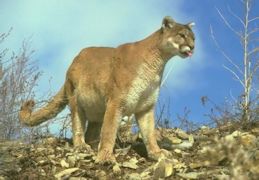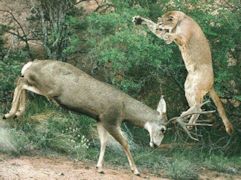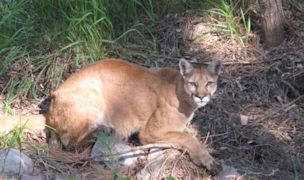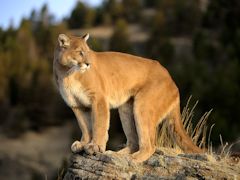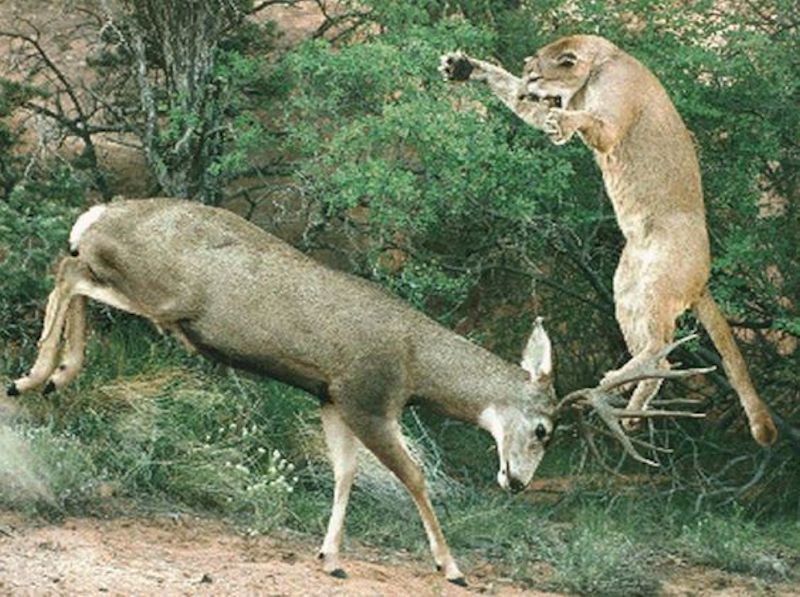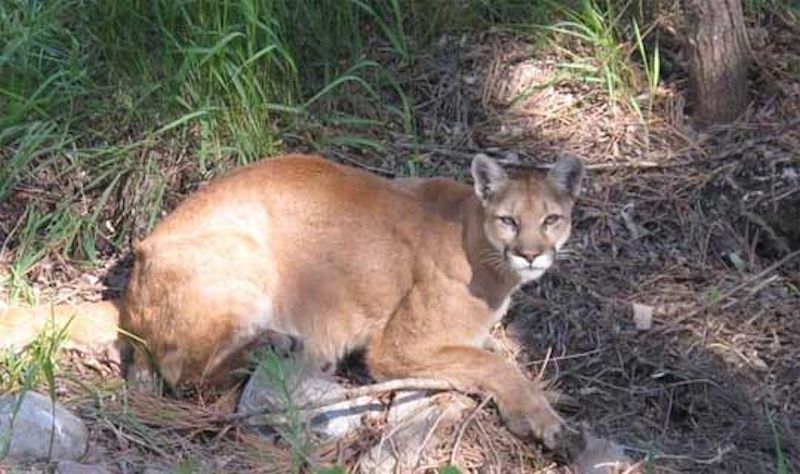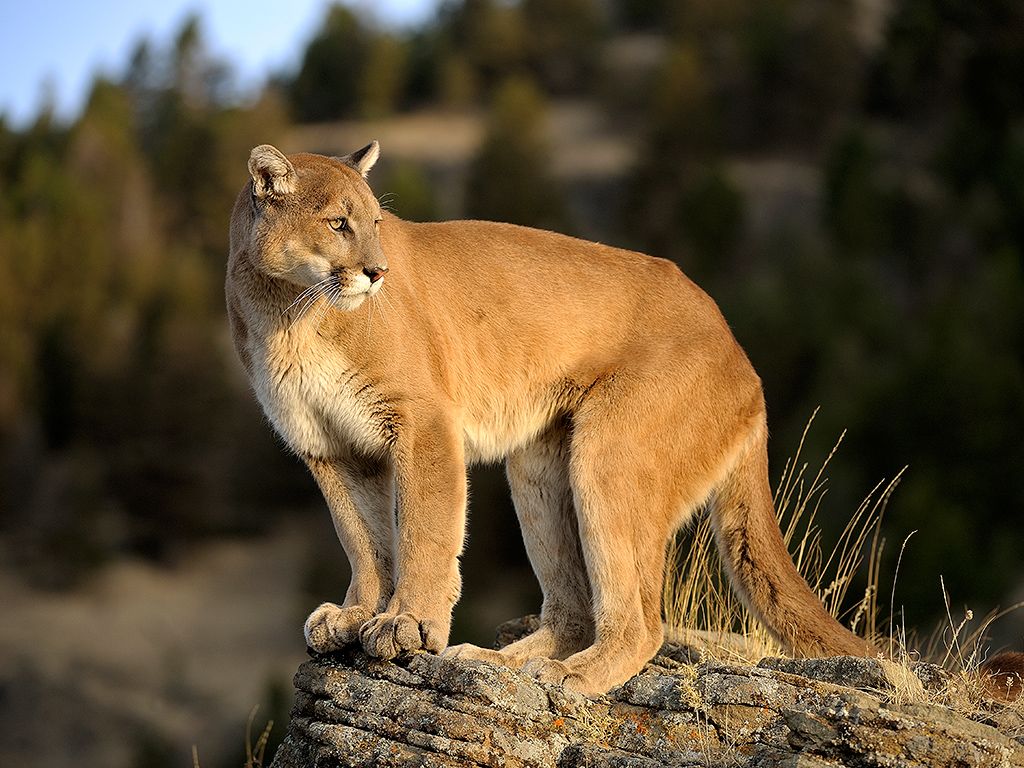Cats
Description
The cougar is extremely agile and has great jumping power and may leap from the ground up to a height of 18 feet into a tree. It is a good swimmer but prefers not to enter the water. Sight is its most acute sense with a good sense of hearing, but is thought to have a poorly developed sense of smell. In captivity, cougars have lived over 20 years, as compared to 8 – 10 in the wild. At Big Cat Rescue one cougar lived to one month shy of 30 years.
Habitat
The cougar thrives in montane, coniferous forests, lowland tropical forests, swamps, grassland, dry brush country, or any other area with adequate cover and prey.
Reproduction
There is no fixed mating season, but in North America, the majority of births occur between late winter and early spring. Females tend to reproduce every other year, and give birth to litters of 1 – 6 (usually 2-3) kittens after a gestation of 90-96 days. Mothers give birth to their young in dens that are lined with moss or vegetation, usually in rock shelters, crevices, piles of rocks, thickets, caves, or some other protected place. Kittens weigh approximately 7-16 ounces at birth, and have spotted coats until they are around 6 months old. They will continue to nurse for 3 or more months, but will begin to take meat at 6 weeks. The kittens will remain with their mothers until they are 1-2 years old, and after separating, siblings will remain together for another 2-3 months. Females reach sexual maturity around 2.5 and males around 3 years. They will not begin to reproduce until they have established themselves a permanent home area. The may remain reproductive until 12 years of age for females, and 20 years for males.
Principal Threats
According to 2001 statistics provided from actual sales of hunting permits, almost 2100 cougars are still being killed each year. This figure does not include all the cougars killed by hunters who do not buy licenses nor report their kills. Less than 3% of our population are hunters but they kill over 100 million animals each year for sport.

